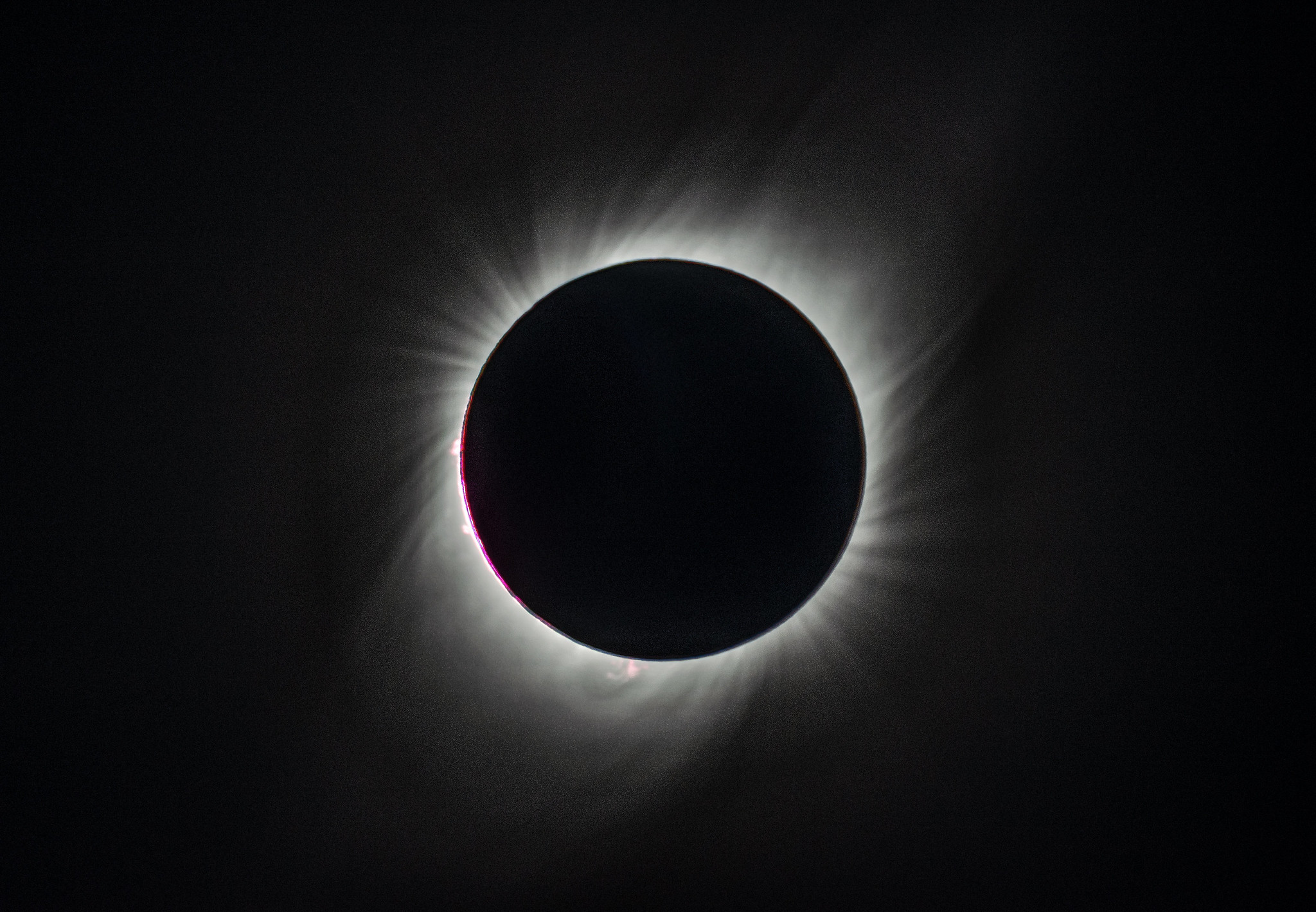By Peter Melahn, Staff Writer
On Monday, a total solar eclipse will cross through North American skies, and parts of Ohio will be in the 115 mile-wide path of totality for this once-in-a-lifetime event for the first time in over 200 years. Cincinnati itself, just outside of this radius, will experience a partial solar eclipse.
Solar eclipses are not rare events themselves, but the likelihood for one particular city, such as Cincinnati, to experience one is quite low. According to the Ohio Department of Natural Resources, the last time the Buckeye State was in the path of totality for a solar eclipse was in 1806, and the next one will not pass over the state until 2099.
The total solar eclipse will first appear around Mexico’s Pacific Coast at around 2:07 p.m. EST and then travel over 15 states, from Texas to Maine, and into Canada. The total eclipse path will cross Ohio from the southwest to the northeast, covering cities like Dayton and Cleveland in complete darkness around 3:10 p.m. A total solar eclipse occurs when the moon passes between the Earth and the sun, completely blocking the sun’s face and revealing its corona.
Cincinnati will experience the partial eclipse for two hours and 33 minutes. For Cincinnati, the eclipse begins around 1:52 p.m. and ends at 4:24 p.m. Downtown Cincinnati is projected to be in a zone in which the sun is approximately 99.7% covered by the moon.

A total solar eclipse, when the moon moves between the Earth and the sun, will cross Ohio from southwestern to northeastern portions of the state. This total solar eclipse is the Buckeye State’s first since 1806.
Several local venues and parks around Cincinnati are having events with activities to enjoy the stellar view and get in the celestial spirit, including Washington Park, Edgewater Sports Park, the Liberty Center, and Miami Whitewater Forest — Cincinnati’s only Great Park of Hamilton County in the path of totality.
With the high anticipation and excitement surrounding the event, Cincinnatians can expect traffic delays on Monday going to and from the path of totality in northern Ohio. Traffic problems in Kentucky in 2017 when the state was in the path of totality in that year’s eclipse have experts from the Ohio Department of Transportation recommending Ohioans to be prepared to be stuck on the roads for a while.
State officials are preparing to accommodate an estimated 150,000 to 625,000 visitors statewide.
For Cincinnatians who traveled to Hopkinsville, Ky. in 2017 to experience the total eclipse that year, the roughly four hour trip there was eclipsed by seven or eight hour return drives back to Ohio as crowds rushed to leave immediately afterwards.
Suggestions — such as making sure to leave with a full tank of gas, water and snacks — are recommended for those planning on traveling north from Cincinnati to view the eclipse in totality.

Updated projections show that Cincinnati should be in a viewing zone where the moon covers 99.7% of the sun’s face. Eclipse viewers in Cincinnati are expected to experience a partial solar eclipse for two hours and 33 minutes.
Just like any major holiday, the major interstates — I-71, 74 and 75 — are anticipated to be greatly stressed tomorrow. Though the eclipse is expected to be in totality in the mid-afternoon across Ohio, major roads such as these are anticipated to be snarled with traffic beginning early in the morning Monday, as hopeful eclipse viewers mix with typical Monday morning commuter traffic.
Eclipse viewers should not be surprised to experience standstill traffic on major roads for several hours after the eclipse across much of Ohio. Experts recommend that those traveling from Cincinnati to northern Ohio should leave more than two hours before expected totality.
The expected traffic overload comes with news that the anticipated path of totality is slightly farther north than once projected. Cincinnati and Hamilton County will be just south of the path of totality, making it more enticing for Cincinnatians to travel north to have a once-in-a-lifetime experience of viewing the eclipse fully. Though Cincinnati will experience a partial eclipse, it is expected that many will travel north to see the sun fully covered.














You must be logged in to post a comment.